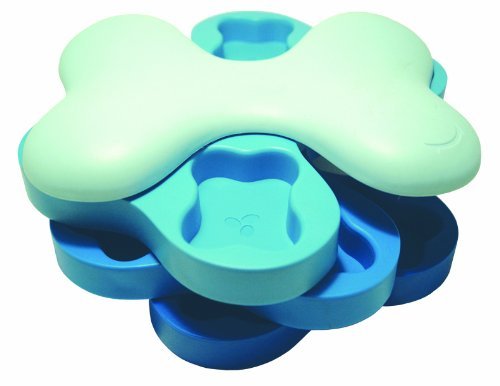
 Credit: Freeimages.com
Credit: Freeimages.com
Despite them being among the world’s leading flea and tick control treatments for dogs, there is a consensus among many veterinarians, canine health experts and researchers that hazardous chemical-based spot-on products like Frontline, Revolution, Spot On, Advantage and K9 Advantix are sometimes best avoided.
Many of these products and others like them work by introducing a pesticide-based toxin to a dog’s body. While this does not ordinarily present a huge risk to larger breeds of young and healthy dogs, there has been evidence of widespread accidental overdoses to smaller dogs and spasmodic fatalities among those that are already debilitated through ill-health or age. Moreover, there is a known cancer-risk to both adults and children who come into contact with some flea and tick product ingredients. Manufacturers forced into recognizing this evidence took measures to dilute or alter their product content and/or changed the design, instructions and safety messages on packaging to cut the potential risk.
It has since been noted by many owners and veterinarians that the effectiveness of treatment (such as Frontline) has been seemingly undermined by these changes. In addition, there is widespread agreement that fleas and ticks adapt quickly to chemical pesticides, which means the longstanding formulations and ingredients of some products have now become ineffective.
Consequently, some pet dogs once thought protected are now suffering the repercussions of severe flea or tick infestations and the serious complications these create. Other manufacturers have turned a blind-eye to the evidence and continue to make vast profits the world over by selling hazardous or inefficient treatments, despite the clear and unequivocal need to continually check, reassess and introduce manufacturing and product changes.
EPA Involvement
The U.S. Environmental Protection Agency (EPA) began investigating spot-on treatments in 2009 when there was a sudden 53% jump in reported incidents by pet owners in a single year, a rise from 28,895 in 2007 to 44,263 in 2008. Chihuahuas, Shih Tzus, Miniature Poodles, Pomeranians, and Dachshunds had the most reported incidents. Although most of the reactions reported involved minor skin rashes and other such ailments, there were also 600 dog and cat deaths among the statistics. Alarm bells started ringing at the EPA and a concerted effort began to find out what was happening.
 Credit: Tony Booth
Credit: Tony Booth
In 2010, the EPA released its findings and in 2011 they demanded a range of changes be made to all spot-on flea and tick products by manufacturers. But they also concluded that, to lower the risk to some pets, they would need to continue monitoring the situation and use more enforcement action at a later date if found necessary. Although there has been a continuous flow of reported incidents since 2011, there have been no further actions undertaken by the EPA or FDA (Food and Drug Administration) to cut the ongoing risks presented by spot-on pesticide-based treatments.
It is noteworthy here to mention that in 2014 Sergeant’s Pet Care Product’s, Inc. and Wellmark International agreed with the EPA to stop the manufacture of pet flea collars containing Propoxur, marketed under the trade names Bansect, Sentry, Zodiac and Biospot. Propoxur is one of the insecticides commonly used by spot-on flea and tick treatment manufacturers. It is highly toxic and the EPA deduced it presents a real health risk to children that come into contact with it. Unfortunately, the agreement permitted manufacturers to continue making these collars until 2015 – and for stocks of them to continue being distributed to pet stores until April 1, 2016.
The “Problem” Chemicals of Spot-On Treatments
Spot-on flea and tick products commonly contain one or more of the following chemical ingredients, which represent some of the more alarming range of poisons of concern to pet owners:
Amitraz: This is a British insecticide that was first synthesized by the Boots Company way back in the 1960s. The EPA considers it a possible carcinogen. There is also evidence it disrupts the endocrine system, which include the glands that produce hormones to regulate metabolism, growth and development, tissue function, sexual function, reproduction, sleep, and mood.
Fipronil: This is found as a primary ingredient in Frontline and several other similar spot-on treatments. It is again classified by the EPA as a likely carcinogen and is toxic to the nervous system of pets and people. It is known particularly to cause thyroid cancer in dogs and to alter the levels of the hormone secreted by the thyroid gland. After using products containing Fipronil, residues of the poison stay on pet fur. Even worse, the toxin becomes an even more potent compound when exposed to sunlight, which means pets that enjoy significant time outside in the sunshine are at higher risk. Fipronil is a neurotoxin, causing damage to the fleas’ nervous system. It can have the same effect on a dog, causing symptoms such as body twitches, convulsions, loss of appetite, unsteady walking and other effects. Canine autopsies have shown Fipronil accumulates in the liver and kidneys, causing an increase in organ weight. It is also known to affect a dog’s fertility, leading to smaller sized litters, a difficulty in conception, decreased litter weights and an increased rate of litter deaths (reported by Vetinfo.com).
 Credit: Freeimages.com
Credit: Freeimages.com
Dinotefuran: There is a huge lack of reliable research on the toxicity and long-term effects of this particular insecticide, even though it is the primary ingredient of some spot-on treatments, notably Vectra-3D. The safety notes on this product are disconcerting. They state: ‘Do not use this product on debilitated, aged, medicated, pregnant or nursing animals known to be sensitive to pesticide products without first consulting a veterinarian.’ Dinotefuran is also used to exterminate cockroach infestations and it is a common ingredient in cockroach bait. Its use as a pesticide was temporarily restricted in Oregon in 2013, pending the results of an investigation into 25,000-50,000 bumble-bee deaths in Wilsonville and Hillsboro. Although it is not considered highly toxic as a spot-on treatment, it is known to irritate the eyes of animals and may have an accumulative effect when used consistently over a long period. The Pesticide Research Institute says it warrants further safety evaluation.
Metaflumizone: ProMeris is the brand name of this insecticide in the marketplace. A variant product was withdrawn from sale in 2011 by Pfizer Animal Care, because a study had linked it to a higher than normal incidence of auto-immune disorder. There is actually very little data about how toxic Metaflumizone is and the Pesticide Research Institute believes there is a need for further safety evaluations. Some lab animal studies have shown toxicity to the nervous system and liver at high doses, which suggests caution is best advised.
Propoxur, Fenoxycarb and Carbaryl: These particular insecticides are commonly grouped together as Carbamates and are toxic to the nervous systems of pets, humans and bees. The EPA considers them as likely carcinogens. The more robust State of California has deemed them definitely carcinogenic. Pets and children are at higher risk from any exposure to residues on pet fur. While the flea collars containing Propoxur mentioned above should become unavailable after April 2016, these chemicals can still be found in some sprays, dusting and dipping products.
Pyrethroids: Several synthetic insecticides combine with this toxin as the base, including permethrin, bifenthrin, bioallethrin, cypermethrin, cyfluthrin, cyhalothrin, deltamethrin, esfenvalerate and tetramethrin. These are all considered toxic to the nervous system of pets and people, and highly toxic to cats. Many are also considered likely or possibly carcinogenic by the EPA. Pyrethroids are known to increase the likelihood of asthma, disrupt the endocrine system and cause allergic reactions in some people and pets. At least 1,600 pet deaths relating to spot on treatments with pyrethroids occurred (reported to the EPA over a five-year period up to 2012), according to an analysis of EPA pesticide incident exposure data by the Center For Public Integrity in the U.S. (reported by The Humane Society).
S-methoprene: This toxin is found in the ingredients of Frontline and several other similar topical products, as well as some dog shampoos, sprays collars and dips. While it's recognized as being among the lesser toxic range of insecticides, it is also known to break down rapidly in sunlight and be a highly toxic hazard to some species of aquatic wildlife, according to the National Pesticide Information Center.
Common Mistakes And Problems When Using Spot-On Treatments
There are many vets that prescribe spot-on products, believing them the most convenient and most effective remedy and preventive treatments against flea and tick infestation. The EPA confirms that, usually, these treatments fall within acceptable safety limits, provided that owners carefully read and follow the manufacturer’s safety and dosing guidelines. The EPA does not recommend pet owners to stop using spot-on products, but asks them to use caution and make informed decisions when selecting treatment methods. But associated illness and fatalities continue to occur, so if you intend using any of these products, the best advice is:
Safer Alternatives to Spot-On Treatments
There are a whole range of safer homeopathic all-natural flea and tick treatments available, but none of them are as effective or as convenient as chemical-based insecticide products.
The natural alternatives present dog owners with two problems. First, there are a distinct lack of reliable studies to confirm how effective they are, so the risk of infestation could be greater; and secondly, they need administering repeatedly at least daily and sometimes more often and according to the season and area where you live. This makes them much less convenient for pet owners when compared with spot-on insecticides or ingestible products like Nexguard. Another problem is that some so-called natural remedies are themselves harmful to pets, particularly when inappropriate doses are given. Diatomaceous Earth is one such example, as it's linked with mesothelioma-like symptoms and irritates the gastric tract and intestines, despite being hailed as one of the most effective all-natural cures for flea and tick infestations.
The complex biological war between plants and insects has been going on ever since they both first developed on the planet. Plants have continually developed and produced a range of poisons targeted at specific predators. For a substance to work, it must poison the insect. Of course, animal parasites are not really a problem for plants, so they don't tend to produce highly effective poisons for something which isn't a threat. The simple truth is … herbal, homeopathic, essential plant oil and other so-called natural flea and tick treatments are never going to control a severe infestation on a dog or cat. It takes a potent chemical insecticide designed for use on specific animals and that deals with the specific parasite to do the job, but owners must also accept the health risks that come with using such poisons.
On the positive side, once an infestation is under control, some less-effective natural treatments will help avoid a re-infestation and can successfully be used on a maintenance and preventative basis. And there is a very simple quick-fix for fleas, if you happen to live somewhere close to a beach. Fleas cannot survive in salt water, so just let your best friend play for an hour so in the sea under close supervision. While this won’t kill any eggs, it will certainly deal with most of the original infestation.
 Credit: Freeimages.com. Photographer: Pietro Ricciardi
Credit: Freeimages.com. Photographer: Pietro Ricciardi
One of the most significant and, in my opinion, reliable and verifiable evaluation studies of natural insecticides useful to treat dogs and cats (produced in 2014) is by David R George, Robert D Finn, Kirsty M Graham and Olivier AE Sparagano. Their paper, ‘Present and future potential of plant-derived products to control arthropods of veterinary and medical significance’, was largely funded by Northumbria University in the United Kingdom. Significantly, the authors declared that they had no competing interests and they were not seemingly intending to promote a particular product, receive any kind of payment or support any bias for or against natural and chemical based pesticides. Their study shows as ‘PFPPDP’ in the comments that follow.
A Few Words About Lice
Although we are deliberating here mainly about the eradication and control of fleas and ticks, it is perhaps prudent to mention lice. Different types of lice infestations are common among dogs and cats the world over. Lice do not ordinarily create the same severe health consequences as fleas and ticks, but they are responsible for transmitting other parasites, such as tapeworms, so it is always important to deal with them when found on a family pet. Unlike fleas they do not live in other places, such as bedding, so treating the house with strong pesticides is completely unnecessary. That said, a clean house does help reduce the spread of lice. Dog beds are best dealt with by washing in hot water with an animal-safe detergent. If a bed is unsuitable for a hot wash, it is safest to throw it out and buy a replacement.
Lice can only be transmitted by direct contact from one animal to another, so if a family home has two or more dogs or cats, it is important to treat all animals at the same time. Lice live close to the skin, but they do not suck blood. They live in the coat, which is why long-haired cats and dogs are more susceptible to them. They appear as visible tiny white specks, about 2mm in length. Dogs and cats will often scratch and/or lick an area repeatedly, if they have lice, so owners should inspect the licking sites with a magnifying glass and look for signs of the parasite.
There are no vaccines, repellents or biological agents that control lice. There are no natural products that will effectively exterminate a serious lice infestation, although many companies commonly suggest otherwise. Perhaps one of the few exceptions is Pyrethrum, which is an insecticide extracted from the Dalmatian chrysanthemum (Tanacetum cinerariifolium). The downside of using it is, it is quickly made inert by sunlight. But on the upside, lice and other groups of insects and parasites don’t tend to adapt or become resistant as quickly to its knockdown toxicity, unlike synthetic (chemical) variations of Pyrethrum in common use.
The chemical control of lice is much the same as for fleas and ticks, but some products work against lice and some do not – so read the product notes carefully, otherwise you will just waste your money. Bathing your pet with special shampoos will give a dog or cat some relief, but it will not cure the problem because these products do not prevent re-infection from lice eggs.
Cedar Oil
One of the most promising natural ingredients is cedar oil, which has potent insecticidal capabilities and a pheromone diffusion action. For example, Dr Ben’s Paw & Claws formulation mixes cedar oil with hydrated silica and claims to kill insects through osmotic dehydration, effectively leeching the flea and tick body of moisture. It also prevents insects from breathing, causing them to die by their own involuntary action, and it dissolves any eggs to make sure there is no secondary infestation. As with all products, it should only be used according to the safety instructions. This is particularly important when treating cats, who typically lick off the application and then suffer from an upset stomach, vomiting and lethargy.
The manufacturer claims Dr Ben’s Paws & Claws Formulation spray was comprehensively tested in Australia, which is surely one of the most challenging areas of the world for tick, flea and mite products. The spray is suitable for use all over a dog or cat's body, but it must not reach or contaminate the eyes. It should also not be used for other small pets, including exotic birds, rabbits, rodents, snakes, ferrets or guinea pigs. Bedding, kennels and carpets can safely be sprayed with it. Its repellent and treatment properties remain active for between 4 and 6 hours, so repeated applications are always necessary. Unlike most spot-on treatments, the manufacturer says this product is safe for newborn puppies, kittens and nursing mothers.
Cedar oil is available from suppliers as an essential oil, which some providers suggest diluting with purified water for use on dogs. I strongly disagree with this and do not recommend any dog owner attempts such a remedy. Some essential oils sold over the counter and intended for human use have impurities and additives and are far too concentrated for animal use. Even if an essential oil is diluted before use, how does anyone know how much to dilute it by to make it safe for a dog, but still be effective against fleas and ticks? In addition, some additives and impurities are fine for humans, but extremely toxic to dogs.
Therefore, if you wish to use cedar or any other natural product safely, I would buy one that has been comprehensively researched and tested as a complete product specifically for dogs or cats by a reliable and trustworthy company.
One of the main problems of many plant-based essential oils used as an insecticide foundation for pet animal products are that their efficiency is not reliable. The insect targets adapt quickly and usually within a few generations, making them later resistant to any particular treatment. Different species of the same insect and parasite also have different adaptive qualities in different locations. Consequently, what may work for one dog in one place, may not then work for another dog in another place. Furthermore, what might work this year, may not necessarily work next year. This same dilemma is also occurring with commercially produced flea and tick treatments and, in fact, sometimes more so than with plant-based extracts. This is why it remains crucial for continued research the world over so that a constant supply of new variants of these products become available.
Coconut Oil
It has long been known that coconut oil has some interesting and beneficial properties for dogs. Several studies claim to prove that it is also excellent for preventing and controlling a variety of parasitic infestations including fleas, mites, ticks, and lice. The advantage of coconut oil is it is safe for use both externally and internally – and has a range of other health benefits regardless of the type of administration employed.
 Credit: Freeimages.com
Credit: Freeimages.com
For external parasites, the best course of treatment advised is an 80% VCO (Virgin Coconut Oil) shampoo specifically designed for dogs. When dogs are shampooed twice a week, the claim is that mange mites are completely eradicated at the 6th week stage (International Scientific Research Journal, VOLUME – V, ISSUE – 2, 2013, ISSN 2094 – 1749). The same shampoo appears to kill ticks and lice within 24 hours and fleas within an hour. Coconut oil has lauric acid, which is an antimicrobial fatty acid. This inhibits the growth of bacteria, which in turn helps heal the injuries sustained from a mange mite infestation. No other single treatment for mange is known to have this dual benefit.
The research study above also states: ‘Further, the emollient, lubricant, exfoliant and anti-itch (Fife, 2001) effect of the essential fatty acids present in VCO such as caproic acid, myristic acid, oleic acid, linoleic acid and stearic acid, moisturizes and softens the skin to aid the removal of crust and scab to expose the deeper layers of the skin where mange mites hide, to effect greater degree of efficacy.’
When taken internally, the lauric acid in coconut oil turns into a compound known as monolaurin. It is a compound said to fight viral pathogens, protects the body from bacteria, and infections from parasites of dogs. Make sure you buy pure coconut oil for canine ingestion and not any variation that has additives or artificial flavorings or colorants. A quarter of a teaspoon of the oil for small dogs and one teaspoon for large dogs drizzled on a dog’s meal each day is a safe method of internal delivery. Larger doses are safe, but dogs can develop diarrhea from it, so be cautious especially when you first start feeding coconut oil to your dog.
Delphinium
Delphiniums are extremely toxic to humans, livestock, and domestic pets, causing severe digestive discomfort if ingested. They can also cause skin irritation on contact. In the wild, Larkspur (Delphinium consolida) is a significant cause of cattle deaths in the western United States. However, there is a safer form of Delphinium extract called Staphysagria 6C, which is available in tube form (containing pellets). Several pellets crushed and mixed with water are practical as a household spray around floor cracks, crevices, and furnishings. This will very effectively kill adult fleas and prevent any eggs from maturing. Repeated twice a month, this will be enough to keep a home free of fleas all summer long.
Earleaf Acacia
Earleaf Acacia (Acacia auriculaeformis) is a tree native to Indonesia and Australia. According to Parasitipedia.net, extracts from the fruit are effective against some tapeworm infestations, but there is a lack of research into the veterinary qualities of this particular plant source. Some reports suggest other acacia species also have similar properties that destroy certain types of parasitic intestinal worm.
Eastern Black Walnut
The Eastern Black Walnut (Juglans nigra) is a tree cultivated in many parts of the world. It has juglone in it, which is toxic to many other plants and some animals. Soaking the leaves from this tree in water and then boiling and squeezing them, produces an extract that will kill flies when applied topically to an animal. More interestingly, ground-up leaves scattered around dog kennels or exterior runs and enclosures will help keep ticks, lice and mites away.
Garlic
It is common knowledge that garlic has some very useful insect repellent qualities. For example, when eaten in small quantities by dogs, it is known to repel ticks. However, fresh garlic has sulfur, which is harmful to dogs when eaten in sufficient quantities. The internet has many conflicting articles and promotional material about garlic and sulfur for dogs. Some suggest they are both safe and beneficial while others claim they are best avoided.
 Credit: Freeimages.com. Photographer Anita Berghoef.
Credit: Freeimages.com. Photographer Anita Berghoef.
My own research into this subject suggests that both claims are true, depending on the amounts given. Sulfur occurs naturally as elemental sulfur. It is in our bodies, in the water we drink, in foods we eat and in the soil we walk on. Variations of sulfur are commonly used for both preserving food, as a pesticide and in the past, as a weapon (mustard gas). However, internal and external contact with excessive amounts of poisons containing sulfur causes health problems. Sulfur additives (in the form of sulfates) in food are carefully controlled by the FDA, who say: ‘A sulfite-sensitive person may experience life-threatening symptoms. Other reactions to sulfites can be severe, especially for those suffering from asthma. Also reported as effects: migraine headaches, hives, anaphylactic shock, and nausea.’
In the book, ‘Veterinary Toxicology: Basic and Clinical Principles’, edited by Ramesh C. Gupta, it states: ‘Clinical and pathologic of acute oral sulfur poisoning are similar across species (White, 1964; Julian and Harrison, 1975; Gunn et al., 1987). Abdominal pain, colic, rumen stasis, fetid diarrhea, dehydration, metabolic acidosis, tachypnia, recumbancy and hydrogen sulfide smell are expected clinical signs. Irritation, edema and hemorrhage of the gastrointestinal tract and respiratory tract also should be expected. In addition, renal tubular necrosis can be seen.’
I wanted to find an answer to the question … how much sulfur intake is too much for a pet dog? But, despite substantial researching, no one seemed able to offer a definitive answer because part of the problem is they already take in an amount of elemental sulfur in water, food and other everyday sources. It is important here to point out that there is evidence that there is a heightened risk of sulfur poisoning for dogs with kidney disease. While there have been many clinical and agricultural studies about sulfur (mostly as it affects cattle and sheep), I could not find any that have investigated the toxic effect on dogs specifically. My best advice is to use caution and avoid giving or using sulfur as a supplement until such time we know more about the consequences.
Garlic tablet supplements specially formulated for dogs have the sulfur removed, so always buy from a reputable pet store and not an ordinary health shop. It is also known that fresh garlic is useful to prevent lungworm and roundworm infection, but research suggests it is probably the sulfur that repels these parasites. Consequently, the safe garlic tablet supplements bought from pet stores are unlikely to have any effect against these parasites. Thiosulfate found in onions and garlic may lead to Heinz Body Anaemia in cats, dogs, and certain primates. However, according to the data of research studies, any susceptibility of dogs to this condition is variable and unpredictable.
Fresh garlic also produces a toxic substance called odoriferous allicin when cut or crushed. However, this is not useful as an insect repellent as some holistic articles claim because when used externally it becomes an irritant to both the eyes and the skin. When taken internally, research studies confirm the active allicin becomes inactive and, therefore, useless as an insecticide. Even if allicin could survive into the blood supply for delivery throughout the body, studies have shown that it changes into other compounds within five minutes. In the process, it would oxidize blood cells causing them to lose their ability to carry oxygen, which would cause a serious health issue.
Geranium Oil
The oil derived from rose geraniums (Pelargonium graveolens) has proved its value as a mosquito repellent, but it is more short-acting than many other more suitable essential oil extractions. It is a mild but useful repellent against ticks when applied in the proper dilution to dogs, but NOT on cats. To combat ticks, apply the right dose of rose geranium oil to a pet's collar. A drop applied directly on a tick attached to a pet's skin is also effective. The tick will detach itself shortly afterward.
Ticks carry dangerous infections like Lyme disease, Rocky Mountain spotted fever and red-blood parasites. Removing ticks immediately is vital to prevent these diseases. In addition to a canine-specific plant-based or synthetic insecticide, owners should carefully inspect their dogs for ticks after every walk in tick prevalent locations. Great care needs taking when removing ticks by hand – ask your vet to teach you how to undertake this safely and professionally.
Neem
Neem is a pesticide extracted from the Indian Neem Tree (Azadirachta indica) seed and has a very long history of use in its country of origin. Research has proved it is most effective against a variety of pest invertebrates, particularly some ticks and even mange mites, in both veterinary and medical studies. PFPPDP points out that one research study alone has led to a variety of commercial products becoming available.
Unfortunately, Neem extracts have proved completely ineffective against the common brown dog tick, which is very resilient to this natural pesticide. ‘Neemazal’ is one of the products developed to target ticks specifically. All of the tests using Neem have been laboratory based and the best results from these may not necessarily translate into any practical effectiveness.
The PFPPDP evaluation concluded that Neem’s value as a pesticide ‘should not be discouraged’, because it actually has comparable and sometimes better features of safety and effectiveness than many comparable synthetic insecticide products. It is important to note that some studies (2004, ‘Safety Evaluation Of Neem Derived Pesticides’ - J Ethnopharmacol) report long-term chronic exposure to Neem has produced a negative impact in some mammals.
In Conclusion
As dog owners, we should always remember that just because something's described or thought of as ‘natural’, it does not necessarily mean it is safe. Some plant-based extracts are more poisonous than any synthetic flea or tick treatment you can buy. Essential oils are attractive to consumers because they are easy to get and are relatively cheap. But knowing which ones are suitable for dogs and finding how to prepare them to make sure they are safe is a complex task best left to professionals in the field. Choosing a flea, tick and other parasitic treatment or preventative product demands thorough research to confirm effectiveness, safety and testing history. In all situations, circumstances, and locations – and before using any synthetic product or ‘natural’ ingredient – you are best advised to first consult your trusted vet.
 Five Ways to Stop Dog Barking When You Leave Your Pet Alone
Many dog owners are surprise
Five Ways to Stop Dog Barking When You Leave Your Pet Alone
Many dog owners are surprise
 Pet Hammock for Car
We have an old dog called Sa
Pet Hammock for Car
We have an old dog called Sa
 Ten Most Popular Dogs in America for 2012
Wanna Join My Puppy Pile?
Credit: coa
Ten Most Popular Dogs in America for 2012
Wanna Join My Puppy Pile?
Credit: coa
 English Springer Spaniels
Introduction And HistoryWhet
English Springer Spaniels
Introduction And HistoryWhet
 An Introduction To Clicker Training For Dogs
How To Begin Clicker Trainin
An Introduction To Clicker Training For Dogs
How To Begin Clicker Trainin
Copyright © 2005-2016 Pet Information All Rights Reserved
Contact us: www162date@outlook.com